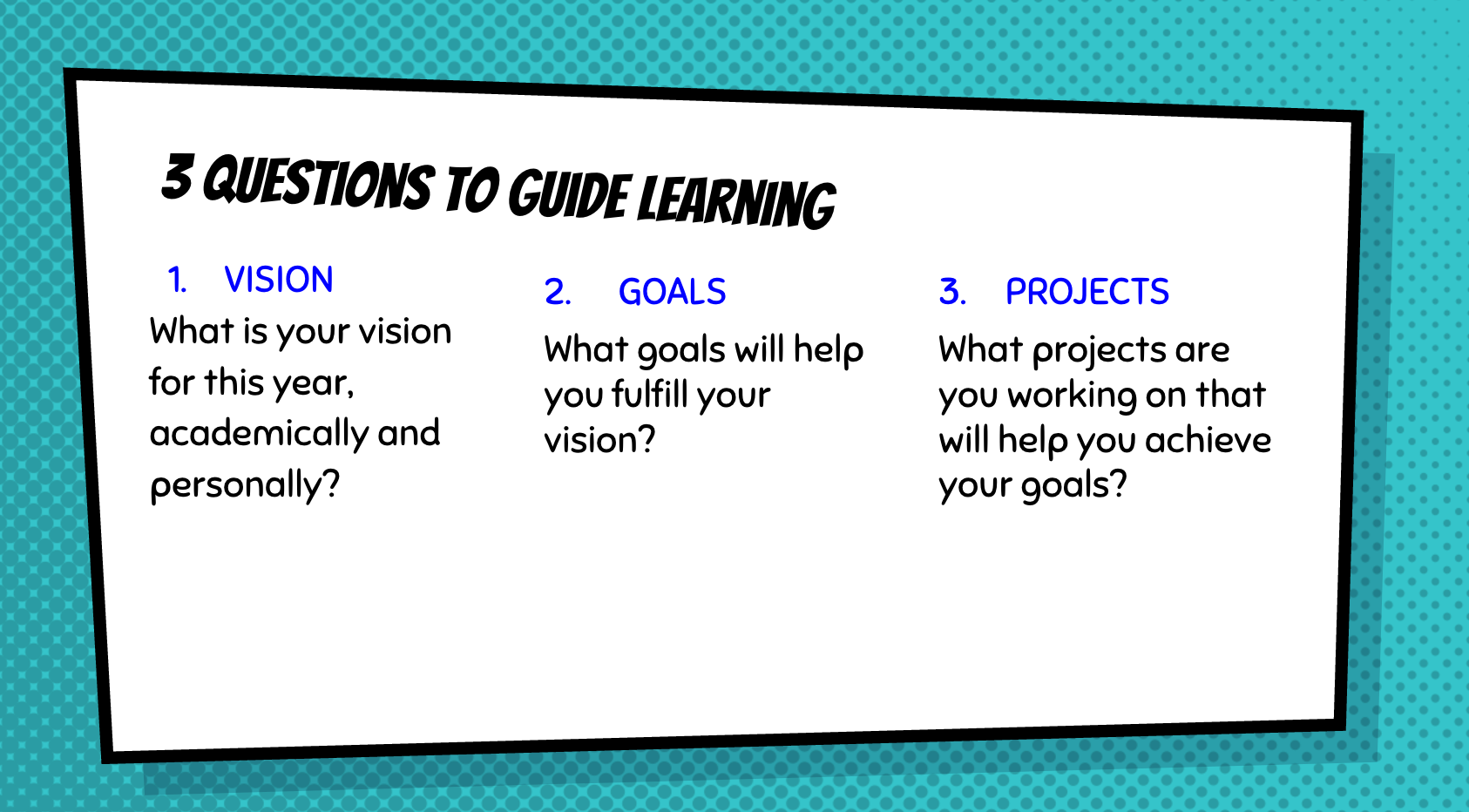3 Questions that Open the Door to Personalized Learning
I worked for 8 years as an advisor and college counselor at Highline Big Picture High School in the Seattle area. (Highline Big Picture is part of a network of Big Picture Learning schools). The students AND the teachers created personalized learning plans each year. The learning plan was a Google Doc that had three questions, each in boxes. There was no fancy design or platform–it was free and developed based on principles from David Allen’s Getting Things Done, a project manager’s Bible and a book for learning how to manage complex projects and ideas and as the title suggests, get things done. It was also based in our steadfast belief that it’s important to ask students what they want to do, be and learn and have their answers to meaningful questions drive their own learning.
3 Questions to Guide Learning for Students
Our learning plan had three questions:
- What is your vision for this school year?
- Based on this vision, what are your goals?
- Based on your goals, what projects are you working on this year?
These questions seem simple enough at face value, which is what I liked about them. Students can engage in the questions from the place that they are, and their responses naturally will evolve and grow as they do. There is a level of conversation, trust and feedback between students and adults that gives the questions value and meaning. For example, wrangling 9th graders to answer a question about their vision was tough. Adolescents don’t always think in future terms which is exactly why they should. Research supports the relationship between an adolescent’s ability to set future goals and plans and positive adolescent health and development outcomes. Being able to set goals towards a long range plan is also one of a series of qualities in students who possess an academic mindset. The presence of noncognitive skills and academic mindsets are a stronger predictor of college degree attainment than test scores.
(By the way, visioning is also sometimes hard for adults. Try asking someone at your next party what their vision is for their future and they may give you a strange look).
How do you help students become visioning experts? At BPL, students had to submit regular updates on their vision/goals/projects, read their learning plans aloud at quarterly presentations, and revisit and revise their goals and projects annually. This ongoing practice helped them get better at visioning. Much better.
By the time many of our students were seniors, their visions for their future were detailed and backed by action– theirs. A vision of wanting to attend a four year university in our state meant evidence and action of taking all the necessary prerequisite tests, obtaining letters of recommendations from teachers and mentors, and applying for scholarships. The students’ abilities to see long term goals through, to delay gratification in pursuit of goals that mattered- was remarkable. Vision and goals by senior year went well beyond surface; a vision of “I want to go to college just because…” didn’t past muster. Instead, students had detailed five year post high school plans that were often 30 or more pages long, backed by evidence of their financial aid, scholarships, college applications, interviews with professors to determine majors and interest areas, reflections on college visits, a budget and more.
3 Questions for Educators
Adults at BPL engaged in the same kind of process. The staff completed quarterly learning plans, and often we shared them on the walls of our classrooms, in hallways and at school wide Gallery Walks. Mine usually hung behind my desk so students could read and ask about projects that I was working on. I typically involved my students in my projects and regularly reflected to them when I was succeeding or even failing at them.
During our weekly staff meetings, we often worked on projects, either in collaboration with other teachers or individually, that were directly related to vision and goals explicitly stated in our learning plans. We followed a specific project process and we regularly shared where we were in accomplishing goals. The real transformation for me was the realization that having and holding a vision for myself in many facets of my life – career, yes, but also in family, relationships, spirituality and health- was satisfying and helped me accomplish what was most dear to me.
The “aha” for me was that organizations can and should help everyone grow: students, educators, staff and leaders. Helping people grow means asking meaningful questions- questions to individuals that only they themselves know the answers to.
The process of setting a vision, writing goals based on the vision and then determining what projects matter (and then following a project process) has been transformational for me as an adult learner. I attribute learning this process to a whole host of other benefits, namely that I now work with students and educators to articulate their vision, delineate goals, and design projects that have meaning and deep relevance to the individual.
Global Online Academy (GOA) reimagines learning to enable students and teachers to thrive in a globally networked society. Professional learning opportunities are open to any educator. To sign up or to learn more, see our Professional Learning Opportunities for Educators or email hello@GlobalOnlineAcademy.org with the subject title “Professional Learning.” Follow us on Twitter @GOALearning. To stay up to date on GOA learning opportunities, sign up for our newsletter here.

